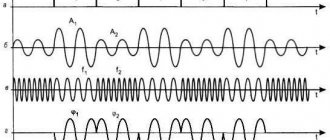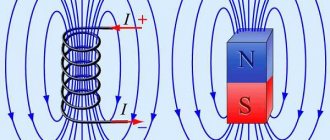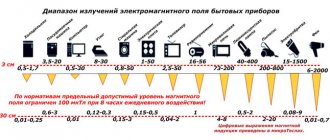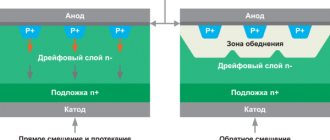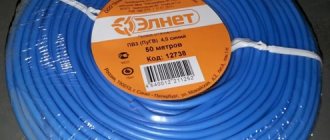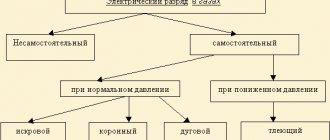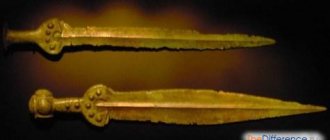Neodymium magnets are the most powerful magnetic material of the new generation today, which has found wide application in many branches of science and technology, as well as in everyday life. Each of us today can encounter them in everyday life, be it buying holders for a refrigerator, headphones, a metal detector, or a computer hard drive in which they are also used.
Neodymium is an active and fairly hard rare earth metal, which, when combined with iron and boron, acquires an incredibly high magnetization ability. This NdFeB alloy, first obtained in 1982, is used to make neodymium magnets of various shapes and sizes. Strong little magnets are most likely located near you right now, for example in your computer or smartphone.
What are neodymium magnets capable of?
Their main advantage over ferrite and other permanent magnets known to man is the high efficiency of the generated magnetic field, which is approximately 10 times higher than that of analogues. At the same time, the process of their demagnetization occurs very slowly - only 5% every 100 years, respectively, and their service life is practically unlimited, that is, they are “permanent” in the literal sense of the word.
Due to their powerful adhesion force to metals, neodymium magnets can hold objects that are 50 and even 100 times their own weight. For example, to unhook a magnetic cube with a side of 5 mm from a metal product, you will need to apply a force of 1 kg. Tiny disc or rectangular magnets can be used as magnetic holders for objects, eliminating the usual mounting methods such as screwing or gluing.
Did you know?
A magnet disk with a diameter of 8 mm and a thickness of 5 mm weighs only 2 grams and at the same time creates a force of more than 1.7 kilograms!
Let's clarify the concepts
A magnetic field is a force acting on charged bodies that are in motion. It “does not work” with stationary objects (or those without a charge) and serves as one of the forms of the electromagnetic field, which exists as a more general concept.
If bodies can create a magnetic field around themselves and themselves experience the force of its influence, they are called magnets. That is, these objects are magnetized (have the corresponding moment).
Different materials react differently to external fields. Those that weaken its effect internally are called paramagnets, and those that strengthen it are called diamagnetics. Certain materials have the property of amplifying their external magnetic field a thousandfold. These are ferromagnets (cobalt, nickel with iron, gadolinium, as well as compounds and alloys of the mentioned metals). Those of them that, when exposed to a strong external field, themselves acquire magnetic properties are called hard magnetic. Others, capable of behaving like magnets only under the direct influence of the field and ceasing to be such when it disappears, are soft magnetic.
Magnet adhesion force for detachment and shear
Adhesive strength is an important characteristic of a neodymium magnet that you should pay attention to when choosing one. It is important to select a product with a certain power reserve. There are two types of adhesive force: peel and shear. Which of the two characteristics is more important depends on the tasks that the magnet performs.
- Pull-off adhesive force
is the force that must be applied to lift a magnetic material from a surface. The characteristics of the product indicate its attractive force under ideal conditions, under which it is completely adjacent to a smooth, even steel sheet with a thickness of at least 20 mm and is torn away from it at a right angle. Since in practice the conditions are far from ideal, the holding force in reality will be lower than declared. - Shear adhesive force
is applied when the magnet moves along the surface of the product. This parameter is approximately 15-50% of the pull-out force. If the load is higher than the declared characteristics, then the object will slide along the vertical surface. For example, a rectangular magnet 20x10x4 mm can withstand a pull-out load of 4 kg, but when used for shear, its maximum load will be 1.8 kg. For many applications, shear force is the main characteristic of a neodymium magnet.
Traction force depends on many factors. For example, on a rough surface it is slightly lower than on a smooth and even surface. The thinner the metal on which the magnet is attached, the weaker it will hold. Objects do not always completely adhere to the magnetic surface, and the larger the area of their contact, the stronger the attraction.
But there are other factors that should not be forgotten. For example, not all metals and alloys are magnetic in the same way. If the product is painted, has a polymer coating or rust, then the adhesion force will also decrease somewhat. It is also necessary to pay attention to the class of neodymium alloy. The higher its serial number, the higher the magnetic energy. For example, N45 > N38.
Thus, the adhesive strength of a magnet depends on the following main factors:
- product size;
- magnetic alloy class;
- fastening method - pull-off or shear;
- thickness and roughness of the metal base;
- contact areas of contact surfaces;
- presence of paint and varnish coatings and rust.
To make it easier to separate two magnets, apply force not to separate, but to shear.
About engines and generators
Based on it, many varieties of electric motors and electric generators have been created, that is, rotary-type machines, the operating principle of which is based on the conversion of mechanical energy into electrical energy (we are talking about generators) or electrical energy into mechanical energy (we are talking about engines). Any generator operates on the principle of electromagnetic induction, that is, EMF (electromotive force) occurs in a wire that moves in a magnetic field. An electric motor operates based on the phenomenon of force arising in a current-carrying wire placed in a transverse field.
Using the force of interaction of the field with the current that passes through the winding turns of their moving parts, devices called magnetoelectric operate. An induction electricity meter acts as a new powerful AC electric motor with two windings. A conductive disk located between the windings is subject to rotation by a torque whose force is proportional to the power consumption.
What is the class of neodymium magnet?
Confused about what the letters and numbers on a magnet mean? – The letter “N” is the grade of the alloy, and the number behind it indicates the class - the maximum magnetic force in megaGauss-Oersted (1 megaGauss-Oersted ≈ 0.8 kgf). On sale, as a rule, there are products made from materials from N35 to N52. The most popular classes are N38 and N45. Higher grades should be used where very strong adhesion is required and the available magnet space is limited. Otherwise, it is more profitable to use two N38 magnetic holders instead of one N52.
Table. Alloys and their magnetic properties.
| Brand/Class | Residual magnetic induction, mT (kG) | Coercive force, kA/m (CE) | Magnetic energy, kJ/m3 (MGsE) |
| N35 | 1170-1220 (11,7-12,2) | ≥955 (≥12) | 263-287 (33-36) |
| N38 | 1220-1250 (12,2-12,5) | ≥955 (≥12) | 287-310 (36-39) |
| N40 | 1250-1280 (12.5-12.8) | ≥955 (≥12) | 302-326 (38-41) |
| N42 | 1280-1320 (12,8-13,2) | ≥955 (≥12) | 318-342 (40-43) |
| N45 | 1320-1380 (13,2-13,8) | ≥876 (≥12) | 342-366 (43-46) |
| N50 | 1400-1450 (14.0-14.5) | ≥876 (≥11) | 382-406 (48-51) |
| N52 | 1430-1480 (14,3-14,8) | ≥876 (≥11) | 398-422 (50-53) |
Science and Communication
Thanks to the magnetic properties of substances, science has the opportunity to study the structure of a wide variety of bodies. We can only mention magnetochemistry or magnetic flaw detection (a method for detecting defects by studying the distortion of the magnetic field in certain areas of products).
They are also used in the production of ultra-high frequency range equipment, radio communication systems (for military purposes and on commercial lines), for heat treatment, both at home and in the food industry (everyone is familiar with microwave ovens). It is almost impossible, within the framework of one article, to list all those highly complex technical devices and areas of application where the magnetic properties of substances are used today.
Effect of temperature on magnetic properties
Neodymium magnets “love” the cold, and their effectiveness does not weaken even at -130°C. Manufacturers must indicate the maximum operating temperature in the product characteristics. This is the temperature above which a magnetic material begins to lose its magnetism, either temporarily or permanently.
All N (Normal) brands usually operate at temperatures up to +80°C and lose, as a rule, 0.11% of energy when the temperature is exceeded by 1°C. Small losses will be recovered by cooling, but frequent heating and cooling cycles will degrade magnetic performance. Additionally, a rapid transition from cold to warm can cause the magnet to break or crack.
Science does not stand still
Scientists continue to experiment with magnetic fields. Experiments are carried out both on animals and birds, and on bacteria. Conditions of a weakened magnetic field reduce the success of metabolic processes in experimental birds and mice; bacteria abruptly stop reproducing. With prolonged field deficiency, living tissues undergo irreversible changes.
It is to combat all such phenomena and the numerous negative consequences caused by them that magnetic therapy as such is used. It seems that at present all the useful properties of magnets have not yet been adequately studied. Doctors have many interesting discoveries and new developments ahead of them.
Where can neodymium magnets be used?
Since their creation, they have confidently held the title of the most powerful and resistant to demagnetization magnets. Without them, many of the latest scientific developments in the field of motor engineering, medicine and electronics would be impossible. They are also useful for home, office work, hobbies, modeling and jewelry making.
Examples of everyday use - useful ideas
- For fixing plates, signs, hooks, shelves, photographs, artwork, and other interior elements.
- As holders for mosquito nets, screws on various tools, souvenirs or notes on the refrigerator.
- For organizing the storage of tools in the workshop, keys, knives, and various small items.
- For collecting small metal products in hard-to-reach places and removing metal debris.
- Cleaning engine and transmission oils.
- Inspection of walls for the presence of hardware inside.
- As locks for cabinet doors, hatches, and box lids.
- Manufacturing of devices for washing windows from the outside.
- Small magnets are used in the manufacture of handmade cards and folders, jewelry, and bag clasps.
- When conducting experiments and tricks.
- Using fastening magnets, you can secure a flashlight in the desired position, objects on a car body, a tarpaulin cover covering equipment, or a tablecloth on an outdoor table.
- Production of magnetic tiebacks for curtains.
- In needlework, modeling and creativity for fastening parts.
You can attach magnets to non-metallic materials in different ways - by gluing them to a base, sewing them into fabric or leather, or using electrical tape or tape. Any thermoplastic or epoxy adhesive of the “Moment” type is suitable for gluing.
We took the magnet seriously
The nature of magnets could not be explained for a long time. With the help of magnets, new continents were discovered (sailors still treat the compass with great respect), but no one still knew anything about the very nature of magnetism. Work was carried out only to improve the compass, which was also done by the geographer and navigator Christopher Columbus.
In 1820, the Danish scientist Hans Christian Oersted made a major discovery. He established the action of a wire with an electric current on a magnetic needle, and as a scientist, he found out through experiments how this happens under different conditions. In the same year, the French physicist Henri Ampere came up with a hypothesis about elementary circular currents flowing in the molecules of magnetic matter. In 1831, the Englishman Michael Faraday, using a coil of insulated wire and a magnet, conducted experiments showing that mechanical work can be converted into electric current. He also established the law of electromagnetic induction and introduced the concept of “magnetic field”.
Hans Christian Oersted
Faraday's law establishes the rule: for a closed loop, the electromotive force is equal to the rate of change of the magnetic flux passing through this loop. All electrical machines operate on this principle - generators, electric motors, transformers.
In 1873, Scottish scientist James C. Maxwell combines magnetic and electrical phenomena into one theory, classical electrodynamics.
Substances that can be magnetized are called ferromagnets. This name associates magnets with iron, but besides it, the ability to magnetize is also found in nickel, cobalt, and some other metals. Since the magnetic field has already entered the field of practical use, magnetic materials have become the subject of great attention.
Experiments began with alloys of magnetic metals and various additives in them. The resulting materials were very expensive, and if Werner Siemens had not come up with the idea of replacing the magnet with steel magnetized by a relatively small current, the world would never have seen the electric tram and the Siemens company. Siemens also worked on telegraph devices, but here he had many competitors, and the electric tram gave the company a lot of money, and ultimately pulled everything else along with it.
Electromagnetic induction
Basic quantities associated with magnets in technology
We will be interested mainly in magnets, that is, ferromagnets, and will leave a little aside the remaining, very vast area of magnetic (better said, electromagnetic, in memory of Maxwell) phenomena. Our units of measurement will be those accepted in SI (kilogram, meter, second, ampere) and their derivatives:
l Field strength , H, A/m (amps per meter).
This quantity characterizes the field strength between parallel conductors, the distance between which is 1 m, and the current flowing through them is 1 A. The field strength is a vector quantity.
l Magnetic induction , B, Tesla, magnetic flux density (Weber/m2)
This is the ratio of the current through the conductor to the length of the circle, at the radius at which we are interested in the magnitude of induction. The circle lies in the plane that the wire intersects perpendicularly. This also includes a factor called magnetic permeability. This is a vector quantity. If you mentally look at the end of the wire and assume that the current flows in the direction away from us, then the magnetic force circles “rotate” clockwise, and the induction vector is applied to the tangent and coincides with them in direction.
l Magnetic permeability , μ (relative value)
If we take the magnetic permeability of vacuum as 1, then for other materials we will obtain the corresponding values. So, for example, for air we get a value that is almost the same as for vacuum. For iron we get significantly larger values, so we can figuratively (and very accurately) say that iron “pulls” magnetic lines of force into itself. If the field strength in a coil without a core is equal to H, then with a core we get μH.
l Coercive force , A/m.
Coercive force measures how much a magnetic material resists demagnetization and remagnetization. If the current in the coil is completely removed, then there will be residual induction in the core. To make it equal to zero, you need to create a field of some intensity, but in reverse, that is, let the current flow in the opposite direction. This tension is called coercive force.
Since magnets in practice are always used in some connection with electricity, it should not be surprising that such an electrical quantity as ampere is used to describe their properties.
From what has been said, it follows that it is possible, for example, for a nail that has been acted upon by a magnet to become a magnet itself, albeit a weaker one. In practice, it turns out that even children who play with magnets know about this.
There are different requirements for magnets in technology, depending on where these materials go. Ferromagnetic materials are divided into “soft” and “hard”. The first ones are used to make cores for devices where the magnetic flux is constant or variable. You cannot make a good independent magnet from soft materials. They demagnetize too easily, and this is precisely their valuable property, since the relay must “release” if the current is turned off, and the electric motor should not heat up - excess energy is spent on magnetization reversal, which is released in the form of heat.
WHAT DOES A MAGNETIC FIELD REALLY LOOK LIKE? Igor Beletsky
Permanent magnets, that is, those that are called magnets, require hard materials for their manufacture. Rigidity refers to magnetic, that is, a large residual induction and a large coercive force, since, as we have seen, these quantities are closely related to each other. Such magnets are used in carbon, tungsten, chromium and cobalt steels. Their coercivity reaches values of about 6500 A/m.
There are special alloys called alni, alnisi, alnico and many others, as you might guess they include aluminum, nickel, silicon, cobalt in various combinations, which have a greater coercive force - up to 20,000...60,000 A/m. Such a magnet is not so easy to tear off from iron.
There are magnets specifically designed to operate at higher frequencies. This is the well-known “round magnet”. It is “mined” from an unusable speaker from a stereo system, or a car radio, or even a TV of yesteryear. This magnet is made by sintering iron oxides and special additives. This material is called ferrite, but not every ferrite is specifically magnetized this way. And in speakers it is used for reasons of reducing useless losses.
Magnet force field
Magnets. Discovery. How it works?
What happens inside a magnet?
Due to the fact that atoms of a substance are peculiar “clumps” of electricity, they can create their own magnetic field, but only in some metals that have a similar atomic structure is this ability very strongly expressed. Iron, cobalt, and nickel are located next to each other in Mendeleev’s periodic table, and have similar structures of electronic shells, which turns the atoms of these elements into microscopic magnets.
Since metals can be called a frozen mixture of various very small crystals, it is clear that such alloys can have a lot of magnetic properties. Many groups of atoms can “unfold” their own magnets under the influence of neighbors and external fields. Such “communities” are called magnetic domains, and form very bizarre structures that are still being studied with interest by physicists. This is of great practical importance.
As already mentioned, magnets can be almost atomic in size, so the smallest size of a magnetic domain is limited by the size of the crystal in which the magnetic metal atoms are embedded. This explains, for example, the almost fantastic recording density on modern computer hard drives, which, apparently, will continue to grow until the drives have more serious competitors.
Magnetic force field
Gravity, magnetism and electricity
Safety precautions when working with strong magnets
Improper handling of powerful magnets can result in personal injury and life-threatening damage. When attracted to each other, they move with great acceleration and can pinch fingers or make a dent on an easily damaged surface. Neodymium products are very fragile, and when struck or dropped, sharp fragments break off. Never attempt to split, cut or drill into them. Drilling products can easily ignite. Magnets affect the operation of some devices, magnetic media, and pacemakers. Do not place them near credit cards, telephones, electronic devices, mechanical watches, CRT monitors, televisions, floppy disks, or cassette tapes. Keep them out of the reach of children (!).
How are magnets used?
What properties of magnets has humanity adopted? Its scope of application is so wide that we have the opportunity to only briefly touch upon the main, most famous devices and areas of application of this wonderful item.
A compass is a well-known device for determining directions on the ground. Thanks to it, routes are laid for aircraft and ships, ground transport, and pedestrian traffic purposes. These instruments can be magnetic (pointer type), used by tourists and topographers, or non-magnetic (radio and hydrocompasses).
The first compasses made from natural magnets were made in the 11th century and were used in navigation. Their action is based on the free rotation in a horizontal plane of a long needle made of magnetic material, balanced on an axis. One end of it always faces south, the other – north. In this way, you can always accurately find out the main directions regarding the cardinal points.
Where to buy a neodymium magnet?
Neodymium magnets of various shapes, sizes and holding forces are offered by the company, whose central store-warehouse is located in St. Petersburg. To familiarize yourself with the range and detailed technical characteristics of magnetic products made of neodymium, we suggest following the link.
Types and shape of neodymium magnets
Types of magnets available for ordering through the website:
- disks;
- rings;
- rectangles;
- squares;
- rods (cylinders);
- discs and plates with a countersunk hole for a screw.
A neodymium disk is a universal form of magnetic fastener that has an adhesive force of up to 55 kg and is used as a holder or retainer. Its variety - a disk with a hole for a self-tapping screw - is used when it is necessary to fix a magnetic holder on a wooden, plastic or concrete surface (wall, cabinet, panel) for subsequent storage of keys or other small iron items.
Magnets in the shape of a ring (washer) have found application in souvenirs, advertising products, products with magnetic locks and clamps. They can be tied to a rope and used to clean liquids and bulk products, and search for hardware in water. Magnets rods (rods) and rectangles are widely used to create household magnetic fasteners, door latches, as well as in modeling, advertising, and electronics.
Most consumers buy neodymium magnets in China, since this country is the leader in the extraction and production of neodymium. Today there is no need to order them on AliExpress and wait a long time for delivery. Wholesale delivers these products to Russia, and the price of neodymium magnets is no higher than on the Chinese website. Small disk magnets with a diameter of 3 to 10 mm can be purchased at prices ranging from 5 to 20 rubles. Medium models with a diameter of 20-30 mm will cost no more than 100 rubles. The cost of the most powerful and largest magnets does not exceed 2000 rubles.
Before and now
However, attempts to treat people with it were made by alchemists back in the 16th century. There have been many successful attempts to cure toothache, nervous disorders, insomnia and many problems with internal organs. It seems that the magnet found its use in medicine no later than in navigation.
Over the last half century, magnetic bracelets have been widely used, popular among patients with impaired blood pressure. Scientists seriously believed in the ability of a magnet to increase the resistance of the human body. Using electromagnetic devices, they learned to measure the speed of blood flow, take samples or administer the necessary medications from capsules.
A magnet is used to remove small metal particles that get into the eye. The work of electrical sensors is based on its action (any of us is familiar with the procedure for taking an electrocardiogram). Nowadays, the collaboration of physicists with biologists to study the deep mechanisms of the influence of the magnetic field on the human body is becoming increasingly closer and necessary.
Decrease in magnetic energy over time
As you know, neodymium magnets lose their properties slightly over time, about 1-2% every decade. At the same time, engineers should take into account demagnetization when creating certain devices. Thus, after 20 years of operation in a generator, a neodymium magnet N50 will be able to perform its functions by 86-98%. Of course, in everyday life such a difference is almost unnoticeable, but in the case of precision equipment, it may be necessary to replace the neodymium part. Note that the ferrimagnetic alloy will lose an incomparably large part of its properties during this time.
